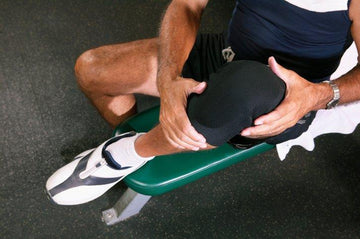

Factors Affecting Muscle Growth Backed by Science
Table of Contents
Factors Affecting Muscle Growth Backed by Science
A decade ago, when scientists wanted to make a muscle grow in laboratories, they only knew of one way: tension overload. In other words, they would take a muscle and overload it via increased weights. One of the most frequent ways in rats was a method called synergistic ablation in which scientists would cut the back part of a rat’s calf. Synergistic ablation involves surgically removing the gastrocnemius and allowing the soleus to remain intact, taking the brunt of the load that was previously shared by both muscles. The scientist’s found that this method of “overloading” the muscle resulted in substantial muscle growth. Exercise-induced muscle hypertrophy is facilitated by many anabolic signaling pathways that shift muscle protein synthesis over muscle tissue breakdown. Scientists have come to learn that tension overload is not the only method of muscle growth; there is also muscle damage and metabolic stress. In an excellent paper written by Dr. Schoenfeld titled “The mechanisms of muscle hypertrophy and their application to resistance training” reports each of these methods can increase the activation of muscle precursor cells (i.e. satellite cells) that are responsible for protein synthesis.
Mechanical Tension: Adding heavier weight to the bar increases several downstream mediators of protein synthesis via AKT/mTOR pathway. The muscle growth process is particularly enhanced from eccentric contractions.
2.) Metabolic Stress: Metabolic stress-induced mechanisms such as tourniquet training include alterations in hormonal milieu (increased GH), cell swelling, free-radical production, ect.
3.) Muscle Damage: Repeated contractions against resistance results in microtrauma to muscle fibers. This injury to the muscle fibers results in an inflammatory response which attracts immune factors such as neutrophils, macrophages and lymphocytes to clear cell debris and stimulate the release of pro-inflammatory myokines (e.g., IL-6) which subsequently stimulate protein synthetic response. Some studies have reported that the use of anti-oxidants and anti-inflammatory drugs can diminish the muscle hypertrophy responses by reducing the inflammatory response.
The author mentioned that all these methods should be incorporated into a bodybuilder’s routine to maximize muscle growth. To maximize hypertrophy, general guidelines recommend that multiple sets in the 6-12 rep range with 60-90 seconds rest between sets are a great starting point for stimulating muscle growth. This will enable sufficient mechanical tension, create muscle damage and increase metabolic stress, all critical factors for inducing skeletal muscle hypertrophy. Exercises should be multi-joint, free weight exercises for maximal stimulation of all muscle fibers. Multiple sets should be used, and, at least, some of the sets should be carried out to the point of concentric muscular failure, perhaps alternating microcycles of sets to failure with those not performed to failure to minimize the potential for overtraining. Concentric repetitions should be carried out at fast to moderate speeds (1–3 seconds) while eccentric repetitions should be performed at slightly slower speeds (2–4 seconds). Training should be periodized so that the hypertrophy phase culminates in a brief period of higher-volume overreaching followed by a taper to allow for optimal super compensation of muscle tissue. Schoenfeld, B. J. (2010). The mechanisms of muscle hypertrophy and their application to resistance training. The Journal of Strength & Conditioning Research, 24(10), 2857-2872.

















